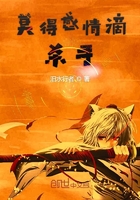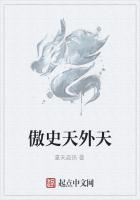Happily we continue to borrow all the beautiful Old World associations, poetical and legendary, that cluster about the holly at Christmas time, although our native tree furnishes most of our holiday decorations.So far back as Pliny's day, the European holly had all manner of supernatural qualities attributed to it: its insignificant little flowers caused water to freeze, he tells us; because it was believed to repel lightning, the Romans planted it near their houses; and a branch of it thrown after any refractory animal, even if it did not hit him, would subdue him instantly, and cause him to lie down meekly beside the stick! Can it be that the Italian peasants, who still believe cattle kneel in their stalls at midnight on the anniversary of Jesus' birth, decorate the mangers on Christmas eve with holly, among other plants, because of a survival of this old pagan notion about its subduing effect on animals?
Would that the beautiful holly of English gardens (I.
Aquifolium), more glossy and spiny of leaf and redder of berry than our own, might live here; but it is too tender to withstand New England winters, and the hot, dry summers farther south soon prove fatal.Ilex was the ancient name, not of these plants, but of the holly oak.
The MOUNTAIN HOLLY (Ilicioides mucronata - Nemopanthes Canadensis of Gray) a shrub of the northern swamps, about six feet high, and by no means confined to mountainous regions, since it is also abundant in the middle West, has smooth-edged, elliptic, petioled leaves, ash-colored bark, small, solitary, narrow-petalled staminate and pistillate flowers on long, threadlike pedicels from the leaf-axils in May.In August dull pale-red berries appear.Darwin proved that seed set with the help of pollen brought from distinct plants produces offspring that vanquishes the offspring of seed set with pollen brought from another flower on the same plant in the struggle for existence.Thus we see, in very many ambitious plants besides those of the holly tribe, a tendency to separate the male and the female flowers as widely as possible.
BLACK ALDER; WINTERBERRY FEVER-BUSH
(Ilex verticillata) Holly family Flowers - Small, greenish white, the staminate clusters 2 to 10flowered the fertile ones 1 to 3 flowered.Stem: A shrub 6 to 25ft.high.Leaves: Oval, tapering to a point, about 1 in.wide, saw-edged, dark green, smooth above, hairy, especially along veins underneath.Fruit: Bright red berries, about the size of a pea, apparently whorled around the twigs.
Preferred Habitat - Swamps, ditches, fencerows, and low thickets.
Flowering Season - June-July.
Distribution - Nova Scotia to Florida, west to Missouri.
Beautiful bright red berries, dotted or clustered along the naked twigs of the black alder, add an indispensable cheeriness to the somber winter landscape.Bunches of them, commonly sold in the city streets for household decoration, bring twenty-five cents each; hence the shrubs within a large radius of each market get ample pruning every autumn.The leaves turn black before dropping off.
The SMOOTH WINTERBERRY (I.laevigata), a similar species, but of more restricted range, ripens its larger, orange-red berries earlier than the preceding, and before its leaves, which turn yellow, not black, in autumn, have fallen.Another distinguishing feature is that its small, greenish-white staminate flowers grow on long, very slender pedicels; whereas the solitary fertile flowers are much nearer the stern.
BITTERSWEET; WAX-WORK; STAFF-TREE
(Celastrus scandens) Staff-tree family Flowers - Small, greenish-white, 5-parted, some staminate, some pistillate only; in terminal compound racemes 4 in.long or less.
Stem: Woody, twining.Leaves: Alternate, oval, tapering, finely toothed, thin, with a tendency to show white variations.Fruit: Ayellow-orange berry-like capsule, splitting at maturity and curling back to display the scarlet, pulpy coating of the seeds within.
Preferred Habitat - Rich soil of thickets, fence rows, and wayslde tangles.
Flowering Season - June.
Distribution - North Carolina, New Mexico, and far north.
Not to be hung above mirror and picture frames in farmhouse parlors, as we have been wont to think, do the brilliant clusters of orange-red wax-work berries attract the eye, where they brighten old walls, copses, and fence rows in autumn; but to advertise their charming wares to hungry migrating birds, which will drop the seeds concealed within the red berry perhaps a thousand miles away, and so plant new colonies.On the smaller, less specialized bees and flies the vine depends in June to carry pollen from its staminate flowers to the fertile ones, whose thick, erect pistil would wither without fruiting without their help.
But the best laid plans of other creatures than mice and men "gang aft a-gley." What mean the little cottony tufts all along the stems of so very many bittersweet vines, but that these have foes as well as friends? Curious little parasitic tree-hoppers (Membracis binotata), which spend their entire lives on the stems, sucking the juices through their little beaks, just as the aphids moor themselves to the tender rose-twigs, might be mistaken for thorns during one of their protective masquerades.















